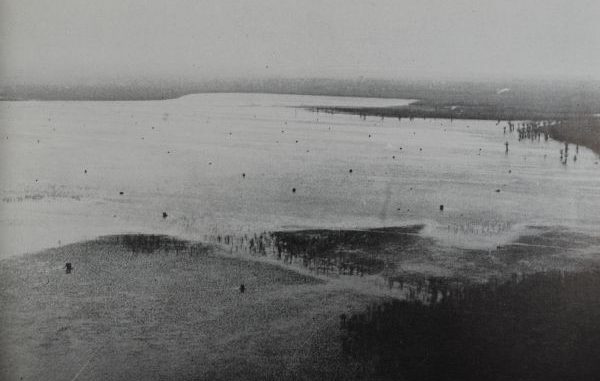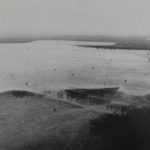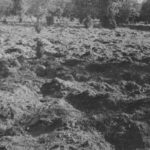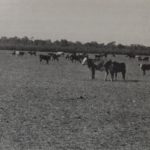
Defining Catahoula is difficult. Perhaps it is easier to define what it is not.
It is not a wildlife management area. It is not private property (or at least it has not been considered so historically), so it is open for “public” hunting. It is not hunter friendly.
Above all, it is not easy to manage.
It might not even be a lake — at least by the most common definitions of the word.
What we call Lake Catahoula is a 30,000-acre saucer-shaped sump on one side of a vast lowland area that is flooded annually by overflow from the Red, Black-Ouchita and Mississippi rivers, along with direct flow from Little River.
Historically, as water levels in the rivers rose in November and December the lake flooded and remained flooded until or through June, after which most of the water drained out through Old River, French Fork of Little River and several small bayous.
The seasonal flood/drain cycle fit with the hard-scrabble, live-off-the-land lifestyle of early European settlers. They ran cattle and hogs in the woods and on the dry lake bed during low water seasons. They ate wild game, including lots of ducks in the winter, and grew much of the rest of their own food. Their dependence on the great lake complex and independence from the rest of the world produced a strong-willed breed of people. The trait still exists today.
When the lake de-watered, its vast mud flats grew dense stands of vegetation, mostly sprangletop, wild millet and chufa.
The first two are grasses and produce seeds relished by ducks. Chufa is a grass-like sedge that grows tubers on its roots similar to those produced by closely related “nutgrass,” that bane of Louisiana gardeners.
Chufa tubers are gobbled by ducks and hogs. One food-habits study showed that 67 percent of the diets of pintails, mallards, wigeon, blue-winged teal, green-winged teal, ring-necked duck and lesser scaup on the lake was chufa.
The cycle of human and wildlife went on, governed only by nature, until 1972. Local residents grazed their cattle on the higher portions of the lake during low water. The lake bed was such a prolific producer of grasses that farmers surrounding the lake baled and harvested as much as 150,000 bales of hay a year.
Their hogs feasted on chufa in the lower portions of the lake bed, and their persistent rooting completely overturned vast tracts of what would become lake during high water. What looked like destruction loosened the soil enough to make the remaining chufa tubers easily available for ducks during the winter.
The entire productivity of the system was driven by the wet/dry cycle. Seasonal flooding by muddy-river backwaters (as well as grazing and other human activities) kept down the growth of trees and delivered a dose of nutrients every year. De-watering by August exposed vast mud flats that immediately grew luxuriant stands of grasses and sedges.
Controversy began in the late 1950s and early 1960s with a proposal to construct locks on the Black River that would permanently raise minimum water levels, both in the river and in the lake — in effect creating a permanent lake.
Chufa, wild millet and sprangletop would essentially disappear.
The controversy was bitter. Claude “Grits” Gresham, arguably Louisiana’s best-known outdoors communicator wrote an article “Will We Lose Catahoula Lake?” in the April-May-June Louisiana Conservationist magazine. He bluntly said, “… the battle may be lost! This vast resource lies on the edge of virtual extinction insofar as hunting and fishing are concerned.”
He referred to it as a “catastrophe.”
“If this lock and dam is built above (emphasis added) Jonesville and the mouth of Little River, it will have no effect on Catahoula Lake or its surrounding tributaries,” Gresham wrote. “If it is built below Jonesville, it will increase water levels over Catahoula Lake in such a way as to eliminate its usefulness to waterfowl and reduce the productivity of the area for fish, both sport and commercial.”
It was indeed built below Jonesville. But the solution to allow mimicking the natural flood-dry cycle was the construction of a massive 17 1/2-mile diversion canal to drain the lake into the Black River below the lock and dam each summer. A large, gated concrete control structure was placed on the channel where it exited the lake to allow human control over water levels.
The project was completed in 1972.
But things changed. Running cattle and hogs on the lake was phased out. LaSalle and Catahoula parishes were the last places in the state to hold to open-range laws that allowed cattle and hogs to roam freely
LaSalle Parish, in which most of the lake lies, ended open range in November 2001. Haying on the lake bed was prohibited, although some illegal haying has still occurred and may be permitted in the future.
Most controversial, however, was and still is water-level management. When it was in Mother Nature’s hands, everyone had to accept what she dished out. Now, the picture has changed, and it seems every Catahoula Lake user has a different idea (which is usually strongly expressed) on the lake’s management.
Official management, of course, isn’t done by users, although their interests are carefully considered. The lake is managed under the Tri-Party Agreement between the U.S. Army Corps of Engineers, the U.S. Fish & Wildlife Service and the Louisiana Department of Wildlife & Fisheries. Much of the rationale for the agreement was to keep this vital waterfowl habitat from being developed. The plan specifies a relatively rigid monthly timetable for lake water levels each year.
Managing the big lake basin has always been contentious. In 1954, the Louisiana Legislature, with Act 320, created the Catahoula Lake Game and Fish Preserve, to be managed by the Catahoula Lake Game and Fish Commission. Its five members were appointed by the governor.
he legislature changed the system with Act 455 in 1966 to provide that the LaSalle, Catahoula and Rapides parishes police juries shall each appoint one commissioner and that the remaining two seats be filled by individuals elected by the holders of the first three seats. Power to operate or regulate gates and outlets was provided to the commission, with the concurrence of the Louisiana Wildlife and Fisheries Commission.
That changed again in 1974, two years after the construction of the diversion canal. With Act 434, the Legislature abolished the commission and transferred all powers to the Louisiana Wildlife and Fisheries Commission.
Much of the current controversy about managing the lake centers on how to control the encroachment of woody shrubs across the lake bed. Primarily water elm and swamp privet, with some black willow, the woody plants threaten to change the lake into a forest, dramatically affecting chufa production. A five-year study done by LDWF shows that open areas of pure chufa yield over 3,000 pounds of tubers per acre. Areas where chufa grows beneath water elm and swamp privet produce only 13 percent as much.
Some argue that cattle and hog use previously controlled the spread of woody plants, although their invasion was documented in the early 1950s, well before cattle and hogs were excluded. From 1954 to 1957, LDWF took vigorous action to mechanically clear about 3,000 acres of the pests.
Many feel that changing the water-level-management regime will help more than anything. Indeed, the spread of the plants has accelerated since the construction of the diversion canal in 1972. According to Larry Reynolds, LDWF waterfowl study leader, 8,000 acres of the 30,000-acre lake is dominated by woody vegetation.
The situation would be worse without aggressive management efforts by LDWF that include herbicide use, rotational bush-hogging of 6,000 acres and limited clearing of mature trees. According to Reynolds, while current control efforts are important, they are expensive and none provide long-term relief.
Habitat is only one factor in seeking to define Lake Catahoula. Another is hunter management.
The lake is a decidedly unfriendly place for “outsiders” to hunt. Decades-long tradition has provided everything-but-legal ownership over hunting spots. Duck blinds are handed down from one generation to the next and included in wills. Duck blinds have even been advertised “for sale” in the Alexandria newspaper.
The peculiar situation of private “ownership” on public property exists simply because it always has. According to Reynolds, he is not aware of any statutory restrictions that prevent the building of private blinds on public property and claiming them as private. Catahoula Lake is not part of LDWF’s WMA system, where the construction of permanent blinds is prohibited.
Many Catahoula Lake blinds are elaborate, some with welded pipe frames and partial roofs. Randy Lanctot, retired executive director of the Louisiana Wildlife Federation said the lake’s “…use is regulated by the tolerance or intolerance of the users for each other.”
But change might be in the air, to the consternation of some and the approval of others. This year, in the neighboring state of Arkansas, the game and fish commission voted to remove all private blinds on Big Lake and St. Francis Sunken Lands WMAs, negating a decades-long tradition based on a “gentleman’s agreement.”
The Arkansas Game & Fish Commission executive director explained that, since federal money was and is used on the lands, the U.S. Fish & Wildlife Service could demand that the state repay federal dollars and cut off more funding if controls aren’t established.
AGFC Commissioner Ernon Mahoney cited hunter harassment as the reason for his vote in favor of the change.
“They (hunters who didn’t own blinds) have been run off, they have been intimidated and they have been threatened,” Mahoney said.
Overshadowing all this is a case wending its way through the courts to determine if the state owns the bottom of the “lake” at all or just the bed of the river channel. If the courts hold that the lake bed is privately owned and ownership has been determined, the owners may charge for blind construction and use of the area.
Lake Catahoula currently holds between 500 and 600 blinds.



